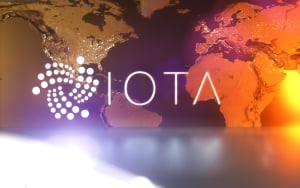
During his recent ask-me-anything session, the IOHK CEO and Cardano creator said that IOTA, an Internet of Things-powered cryptocurrency project, is not actually feeless:
It's a common misconception. "IOTA doesn't have fees." Yeah, it does. They are just subsidized in a different way. Guys, there is network capacity, CPU, and data. It costs money. Nothing is free.
Morning Crypto Report: Elon Musk's SpaceX Relocates $100 Million in Bitcoin, USD Stablecoin $1 Million Exploit, New Cloudflare Outage Takes Down CoinbaseXRP Hits Deepest Fear Levels Since OctoberCrypto Market Prediction: 150% Shiba Inu (SHIB) Skyrocketing, Is Ethereum (ETH) Death Cross Cancelation Confirmed? Where's Bitcoin (BTC) Going to Stop: $93,000, $86,000 or Lower?Ripple Finalizes Acquisition of Treasury Management Giant GTreasury
While he explains that sending MIOTA might not incur any fees, they have to be paid for "somewhere in the value chain."
He draws parallels between sending transactions and tweeting on social media platform Twitter:
Twitter pays for it and makes it back with ads and selling my data. Their operating costs are in the billions of dollars.
IOTA proponents weigh in
Yet, some questioned Hoskinson's take since all that matters is that MIOTA can be sent for free by the end-user.
IOTA founder David Sonstebo—who parted ways with the IOTA Foundation in December—was among those who chimed in:
Feeless does not mean incentive-less.
IOTA Foundation's Hans Moog compared MIOTA transactions to emails in his tweet:
Sending an email is not "free" - you need a computer and an internet connection but its feeless. IOTA works in the same way. You need a node, an internet connection and some funds to send around.
Unlike Bitcoin, Ethereum and Cardano, IOTA is not a blockchain. It is actually powered by a distributed ledger called Tangle, which was designed to be scalable enough to be widely adopted for exchanging data between different IoT devices, such as electric cars.
Last February, IOTA faced some bad publicity after the blockchain was essentially switched off after the hack of the Trinity wallet.
However, production-ready IOTA 2.0 will remove the Coordinator node that is currently responsible for confirming transactions, thus making the network entirely decentralized.

 Dan Burgin
Dan Burgin Vladislav Sopov
Vladislav Sopov U.Today Editorial Team
U.Today Editorial Team